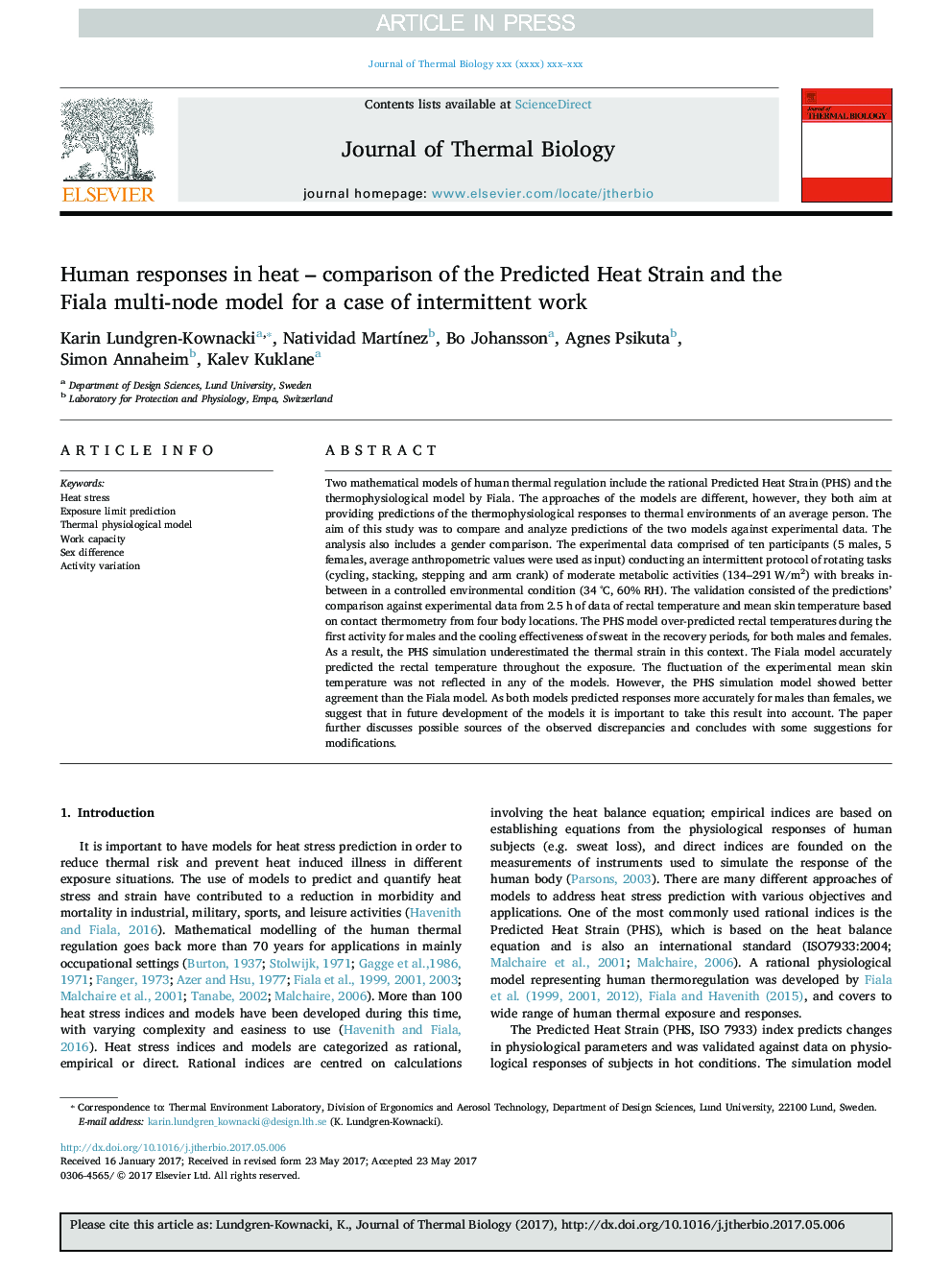| کد مقاله | کد نشریه | سال انتشار | مقاله انگلیسی | نسخه تمام متن |
|---|---|---|---|---|
| 8650188 | 1571078 | 2017 | 8 صفحه PDF | دانلود رایگان |
عنوان انگلیسی مقاله ISI
Human responses in heat - comparison of the Predicted Heat Strain and the Fiala multi-node model for a case of intermittent work
ترجمه فارسی عنوان
پاسخ های انسانی در گرما - مقایسه مقادیر گرما پیش بینی شده و مدل چند گره فیالا برای یک کار متناوب
دانلود مقاله + سفارش ترجمه
دانلود مقاله ISI انگلیسی
رایگان برای ایرانیان
کلمات کلیدی
استرس گرما، پیش بینی محدودیت قرار گرفتن در معرض، مدل فیزیولوژیکی حرارتی، ظرفیت کاری، تفاوت جنسی، تنوع فعالیت،
موضوعات مرتبط
علوم زیستی و بیوفناوری
علوم کشاورزی و بیولوژیک
علوم کشاورزی و بیولوژیک (عمومی)
چکیده انگلیسی
Two mathematical models of human thermal regulation include the rational Predicted Heat Strain (PHS) and the thermophysiological model by Fiala. The approaches of the models are different, however, they both aim at providing predictions of the thermophysiological responses to thermal environments of an average person. The aim of this study was to compare and analyze predictions of the two models against experimental data. The analysis also includes a gender comparison. The experimental data comprised of ten participants (5 males, 5 females, average anthropometric values were used as input) conducting an intermittent protocol of rotating tasks (cycling, stacking, stepping and arm crank) of moderate metabolic activities (134-291 W/m2) with breaks in-between in a controlled environmental condition (34 °C, 60% RH). The validation consisted of the predictions' comparison against experimental data from 2.5 h of data of rectal temperature and mean skin temperature based on contact thermometry from four body locations. The PHS model over-predicted rectal temperatures during the first activity for males and the cooling effectiveness of sweat in the recovery periods, for both males and females. As a result, the PHS simulation underestimated the thermal strain in this context. The Fiala model accurately predicted the rectal temperature throughout the exposure. The fluctuation of the experimental mean skin temperature was not reflected in any of the models. However, the PHS simulation model showed better agreement than the Fiala model. As both models predicted responses more accurately for males than females, we suggest that in future development of the models it is important to take this result into account. The paper further discusses possible sources of the observed discrepancies and concludes with some suggestions for modifications.
ناشر
Database: Elsevier - ScienceDirect (ساینس دایرکت)
Journal: Journal of Thermal Biology - Volume 70, Part A, December 2017, Pages 45-52
Journal: Journal of Thermal Biology - Volume 70, Part A, December 2017, Pages 45-52
نویسندگان
Karin Lundgren-Kownacki, Natividad MartÃnez, Bo Johansson, Agnes Psikuta, Simon Annaheim, Kalev Kuklane,
